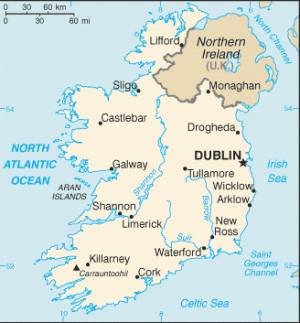Ireland has one of the highest percentages of female primary teachers in the EU, at 85.8%. This skewed statistic highlights the cultural values that deter males from applying for a career teaching young children.
I have first-hand experience working in a female-dominated profession as I trained as a nurse when I left school.
Soon after qualifying, I specialised in child and adolescent mental health which, like primary school teaching, has very few males working in the area.
If I got a euro for every time a lecturer noticed that I was the only male in the class and remarked, ‘blessed art thou amongst women’, I could have paid for my holidays and student fees.
I remember the stigma I faced as a male entering a caring profession.
Many of my peers dubbed my career choice ‘girly’ and when I informed my Irish oral examiner that I was going to be a ‘banaltra’ (the Irish word for nurse), he kindly stopped the tape to offer me some help by pointing out what I had just said, thinking I had mixed up my translation and meant something else.
These responses speak to our perception of males in caring roles, which can be dismissive or negative. However, more than half of doctors in Ireland are male, which might suggest that pay and status are factors that can overcome this stigma.
It was never suggested to me by any career guidance teacher that I would be suited to a career working with children, instead I was encouraged to pursue marketing or business.
There is also an unspoken wariness that accompanies males who take on roles that involve young children. The decades of clerical child sex abuse scandals, followed by court cases taken against male teachers, swimming coaches, and scout leaders, have left their mark on the psyche of our country.
While Garda vetting and child protection procedures have become commonplace in recent years and are welcomed, these measures come off the back of sordid experiences that continue to live on in the memory of our society.
Risks of working with kids
Many colleagues who work in adult mental health say they would never move to child and adolescent mental health because the risks of working with children are too high. This is also feedback I hear from male student nurses.
The ’risks’ they refer to are claims of inappropriate sexual behaviour. Many males working with children have to be hypervigilant about protecting themselves from allegations.
While this is understandable and appropriate, it is an anxiety-inducing component of the role which might deter some potential candidates from opting for these roles.
Like men working in children’s mental health services, perhaps male primary school teachers are also concerned about the risk of being accused of inappropriate sexual behaviour.
The lack of professional progression opportunities and pay increases may also be a factor in the under-representation of male teachers in primary schools.
While teaching is a profession that still holds status in Irish culture, promotional opportunities are limited.
Yet, in keeping with societal norms, men are disproportionately over-represented in the number of school principal posts in Ireland.
American education policy academic Seth Gerehson conducted a study that followed 106,000 primary school-aged students through to adulthood and found that boys did better when they had a male teacher, and girls did better with a female teacher.
They also found no effect on white children when they had a black teacher.
When black children had a black teacher, the boys were significantly less likely to drop out of high school, and boys and girls were more likely to attend college.
Our female-dominated education system does not reflect real life or the real world.
Much like the argument against single-sex schools, life is not segregated or ratioed in the way primary school staff teams are.
As young boys don’t see many male teachers, they are less likely to consider that role for themselves when choosing a career.
Lack of diversity a concern
The lack of diversity in our primary educators is of even greater concern. Most primary school teachers are white, Irish people.
The main issue is the entry requirement to have a high level of attainment in the Irish language.
This stipulation rules out many people and may significantly limit the pool of potential candidates who could otherwise adequately teach primary school-aged children.
The lack of diversity among primary school teachers is not representative of modern Irish society and is not reflective of the real world that our children inhabit.
With repeated calls for more teachers to join the Irish workforce, we need to consider how the current criteria rule out potential candidates who could become excellent teachers.
There is a lot of talk about how the religious doctrines of schools are not inclusive of children of different denominations.
But surely, the requirement for trainee teachers to have Irish is similarly problematic in embracing a spirit of diversity and inclusivity.
School is more than just a place where children learn to read and write. It is a microcosm of society with all its strengths and limitations.
We need to pay attention to our cultural blind spots while we coach our children to negotiate the world in an inclusive and diverse way.
An excellent place to start is with culturally diverse and gender-balanced primary school teachers. When children can see it, in time they will be it.
Dr Colman Noctor is a child psychotherapist
September 5, 2023

